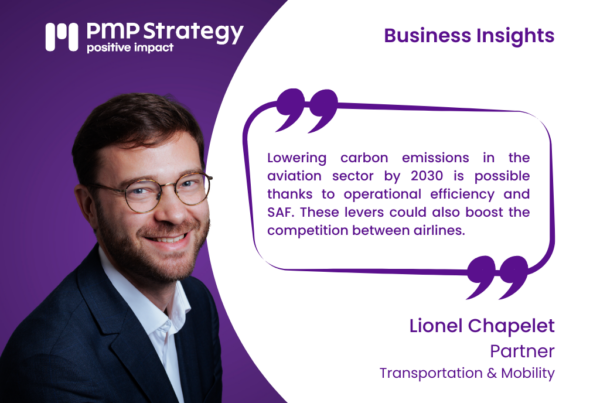THE DATA, THE NEW BLACK GOLD?
Data and oil have been compared very often. In Internet memory, the formula ” Data is the new oil ” was used for the first time in 2006 by Clive Humby who, as a visionary, pointed out their similarities. Unrefined, petroleum cannot really be used. To create value that drives profitable business it must be transformed into gas, plastic, chemicals, etc.
Since then, the formula ” Data is the new oil ” has been taken up by some, or criticized by others. The analysis of Piero Scaruffi, researcher in cognitive sciences and author of History of Silicon Valley (2016) is particularly interesting. According to him, there is a real difference between data and oil because the production of oil does not generate more oil while the production of the data generates more and more data . And that changes everything!
To explore this particularly topical subject in mobility, PMP co-organized a conference on October 18 with Weborama and Bird & Bird. The event brought together leading speakers:
- Mickael BRAMI, Regional Sales Director EMEA of Moovit, the world’s first public transport app claiming the first big data base on travel (300 million users worldwide, 300 billion GPS data point records per day)
- Frédéric GRELIER, Chief Data Officer of Weborama, specialized in the collection and analysis of marketing data. Weborama is indeed developing databases of consumer profiles, technological solutions and services for digital marketing (1.5 billion cookies processed worldwide each year)
- Stéphane LERICHE, Partner at Bird & Bird, an international law firm in charge of subjects relating to telecommunications, e-commerce, information technologies and the protection of digital technological assets such as software and databases of data
- Guillaume GIBON, CEO of Citio, a solution for optimizing public transport thanks to big data and artificial intelligence which has developed an algorithm allowing to reconstruct and follow the movements of travelers
- Fabrice LURIOT, Director of Mobility by Colas, which offers solutions based on digital and data, such as MaaS, preventive management of road assets and optimization of mobility around construction sites
- Olivier VACHERET, Head of the Information and Digital Services Department of Ile-De-France Mobilités, particularly involved in the M2I project which aims to facilitate travel in Ile-de-France by leading a pioneering and global approach to mobility (integration of the entire public and private mobility offer, including individual vehicles)
These speakers exchanged within the framework of round tables around two key themes:
- How to rely on data to better know your customers?
- How to use data to launch innovative services?
HOW TO USE DATA TO BETTER KNOW YOUR CUSTOMERS?
In mobility, more and more data is produced and analyzed. They come from the connected infrastructure , the connected vehicles or even operating systems and regulation of cities and transportation.
Data not directly linked to mobility can also provide important lessons for understanding customers and their mobility needs. Internet and social networks, IoT networks or smartphones are thus real gold mines that can be exploited to better understand customers (knowledge of mobility flows and practices, marketing segmentation, etc.), giving rise to a new skill, the “Marktech” !
At a time of convergence between public transport and individual mobility, access to data from connected vehicles is becoming particularly key . You only have to compare the amount of data produced in vehicles and in smartphones to realize that vehicle data will tomorrow be at the heart of knowledge of mobility needs and preferences.
Comparison between the amount of data generated by connected vehicles and smartphones (Sources: GARTNER, CISCO, PMP analyzes)
Customer knowledge is all the richer the more we manage to consolidate data from different sources – our own data, but also that from external sources. This observation, widely shared, is not, however, so easy to achieve.
- The data is indeed often seen as a strategic asset and data producers are often reluctant to broadcast, for fear of losing the value associated with reuse
- The reuse of customer data is legitimately framed by the General Data Protection Regulation (GDPR). Its implementation can be seen as a brake on innovation in Europe in a context where foreign players do not have the same constraints on their domestic market.
Isn’t this situation ultimately likely to leave a boulevard to the digital giants who already have a lot of mobility data and are specialists in customer knowledge?
The conduct of partnership approaches and the sharing of data seem to be the only means of countering the digital giants. The abortive initiative of SNCF, Transdev, RATP and Blablacar to constitute a “data garage” can lead to pessimism. But interesting practices from other sectors could inspire mobility players:
- The Gravity Alliance , which makes all of the transactional, navigation and CRM data of the French publisher market operable to agencies and advertisers (it brings together around a hundred French press, entertainment and retail companies).
- The Sygma Data Video Access initiative launched by the advertising agencies of the France Télévisions, TF1 and M6 groups to provide standardized and secure access to logged data (information collected in an environment where an Internet user has “logged in” and which is therefore known to be very reliable). This technological standard combines premium video inventory and logged data, which simplifies access to the advertising market associated with video in which Youtube, a subsidiary of Google, is obviously very present.
- If data still remains at the center of current discussions (cf. the Mobility Orientation Law under discussion), this subject should nevertheless no longer be debated for very long, the value moving very quickly towards mass processing technologies and algorithms.
HOW TO USE THE DATA TO LAUNCH INNOVATIVE SERVICES?
Beyond customer knowledge, the data can be used to enrich existing services or launch new services. Difficult to be exhaustive:
- Mobility services: public transport, car sharing, carpooling, multimodal mobility, smart parking, electric vehicle recharging, etc.
- Information and calculation of real-time and predictive routes,
- Mobility as a Service (complete and integrated service offering all modes of transport, public and private, via a single mobile application),
- Driving assistance and vehicle empowerment services, as well as personalization of preferences (e.g. vehicle settings, temperatures, seat positions, etc.),
- Fleet management, vehicle maintenance and repair
- Assistance services (in case of breakdown, alerts, etc.)
- Insurance services per use
- Road safety, traffic management and knowledge of mobility flows
- Improved knowledge and management of road and rail assets
- Infotainment
- Payment
- Geomarketing and construction of targeted and personalized commercial offers.
The list is long and shows that mobility data can be used in a great many contexts and by a great many actors, both private and public.
Data is thus at the heart of the development of innovative mobility services. In particular, access to data is of strategic importance for launching MaaS services which require the aggregation of both private and public mobility offers .
- The creation of a trusted third party facilitates the pooling of data from otherwise competing mobility operators. But who can play this role: only public actors? They are not necessarily intended to develop all of the bricks of a MaaS themselves, in particular the interface with the traveler, even if this can make it possible to highlight the brand of a territory and therefore have a strong political impact
- The data required to set up MaaS are not all accessible today. In this context, is the value found in the control of data or in the development of services? The construction of partnership and balanced economic models seems to be the only way out to bring all the skills needed to set up a MaaS around the table and promote data sharing.
If Ile-de-France Mobilités and many metropolises have already positioned themselves on this subject, it is also to meet the challenges of the sustainability of the mobility service and the reversibility of a public market which would entrust the development and operation of the MaaS to a private operator.
It should also not be forgotten that MaaS must above all meet the mobility needs of travelers , which reinforces the need for knowledge of customers and their mobility. The circle has come full circle with the theme of the first round table
Lionel Chapelet & Caroline Ponal
Lionel Rosary Caroline Ponal




